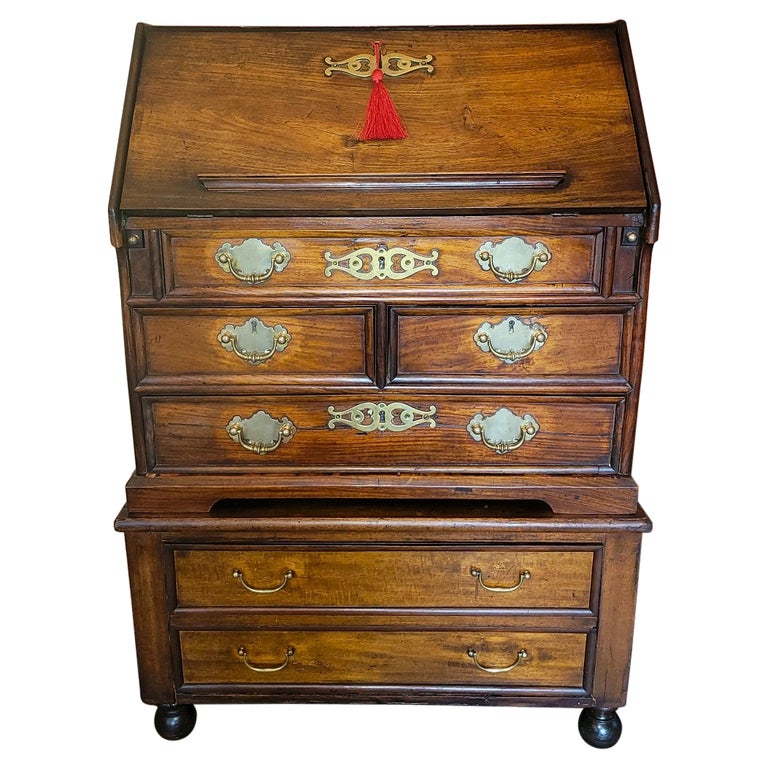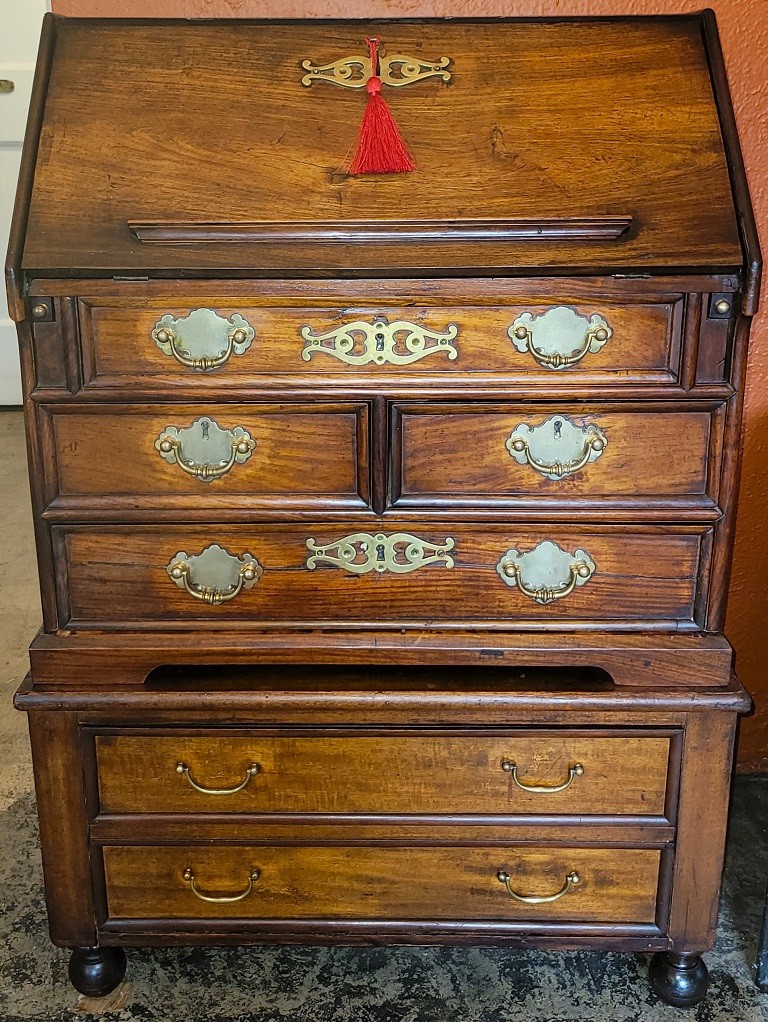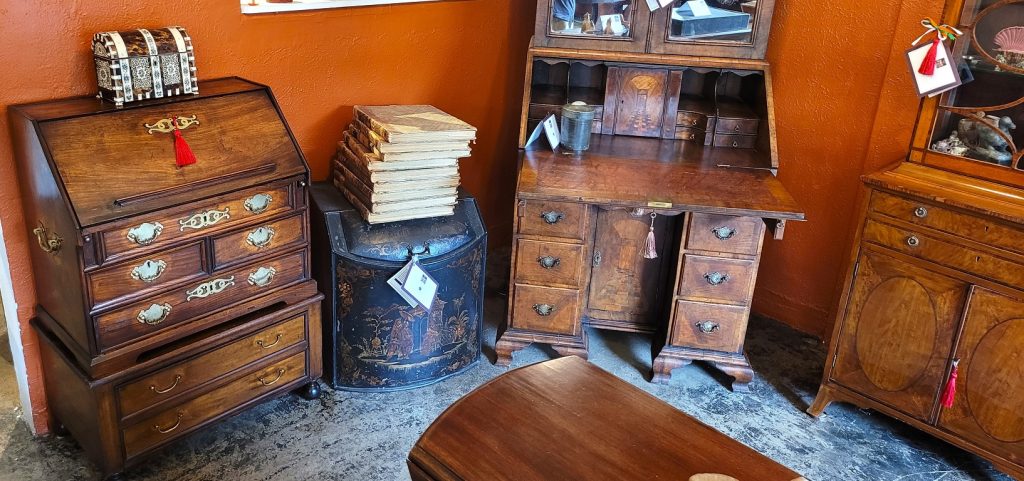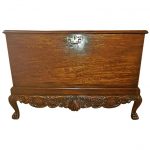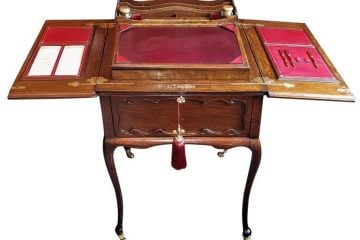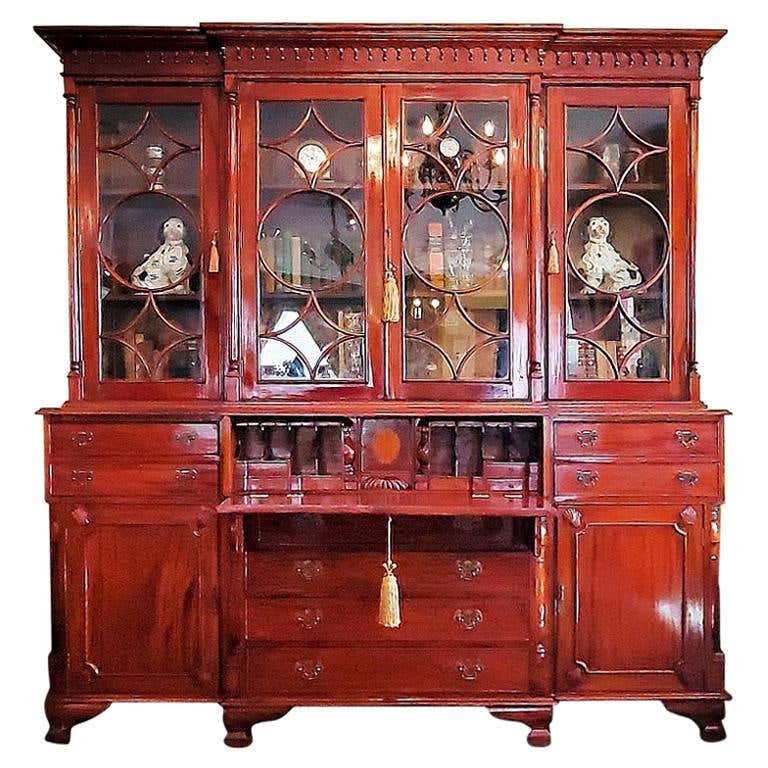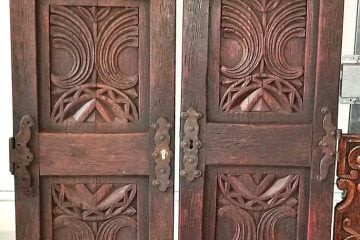18C George II Miniature Campaign Bureau Chest on Later Chest/Stand
PRESENTING A GORGEOUS and beautifully proportioned Mid 18th Century George II Miniature Campaign Bureau Chest on later Chest/Stand.
Mid 18th Century, made in Britain, circa 1760-70.
The bureau chest sits on a later stand/chest, that we estimate is Late19th Century, circa 1860-80. It is also British.
We believe that the primary wood in this piece is either Elm or Sycamore with mahogany elements.
Classic Campaign style miniature Bureau Chest, with its ORIGINAL George II brass hardware, including handles on the sides for easy carriage, which is what proves to us, that this chest was made for campaign purposes.
The brasses are GORGEOUS and are classically George II in style, design and construction.
The quality, thickness and patina to the brasses, is what ‘initially’ tells us, that this is a ‘period’ piece and not a reproduction.
Likewise, the dovetailing detail to the drawers, tells us that this was a hand crafted piece and certainly NOT machine made.
The secondary woods appear to be a combination of oak and pine, exactly as one would expect.
The central keyhole escutcheons are FANTASTIC and are in the form of a pair of opposing ‘lyres’.
We have never seen anything like them!
Beautiful natural patina!
The ‘brasses’ look like they have been polished a ‘little too often and vigorously’ over the piece’s 250+ years history … BUT … the bonus of this cleaning is the creation of a ‘2 Tone effect’ on the patina of the wood around the brasses!
The Bureau has a flat gallery on top with raised molding around the back and sides.
The central bureau door has a raised molding/plinth/ledge on the front, for resting books or papers and opens to sit on 2 pull out brackets underneath, for support.
The bureau door opens to reveal the writing slope, arched pelmet above 5 cubbies, 5 drawers (one large one in the center and 4 smaller ones on either side).
The area just in front of the drawers has a LOVELY sliding lid which gives access to the drawer underneath.
Below the writing area there is a large drawer on top, with 2 smaller drawers below that and another large drawer at the bottom.
The bureau has a simple long footed arched base.
It currently sits on a very sympathetic chest base, which acts as it’s stand. This base is likewise made of elm or sycamore with mahogany elements, but is of later construction. The moldings and patina are a very good match.
It looks like it is a 2 drawer chest, but is in fact one large drawer.
The 4 brass pull handles are really what gives it away as being of more recent construction, as they are more late 19th Century, in style and design.
The secondary woods are pine only and it has hand-crafted dovetailing to the drawers.
The base chest/stand sits on 4 turned bulbous feet.
We are of the opinion, that the George II Miniature Bureau, probably originally sat on a plain wooden stand, which was lost at some stage in the 19th Century and replaced with the current base. The 2 pieces have been together for well over 120 years!
GEORGE II: George II (George Augustus; German: Georg II. August; 30 October / 9 November 1683O.S./N.S. – 25 October 1760) was King of Great Britain and Ireland, Duke of Brunswick-Lüneburg (Hanover) and Prince-elector of the Holy Roman Empire from 11 June 1727 (O.S.) until his death.
George was the last British monarch born outside Great Britain: he was born and brought up in northern Germany. His grandmother, Sophia of Hanover, became second in line to the British throne after about 50 Catholics higher in line were excluded by the Act of Settlement 1701 and the Acts of Union 1707, which restricted the succession to Protestants. After the deaths of Sophia and Anne, Queen of Great Britain, in 1714, his father George I, Elector of Hanover, inherited the British throne. In the first years of his father’s reign as king, George was associated with opposition politicians, until they re-joined the governing party in 1720.
As king from 1727, George exercised little control over British domestic policy, which was largely controlled by the Parliament of Great Britain. As elector, he spent 12 summers in Hanover, where he had more direct control over government policy. He had a difficult relationship with his eldest son, Frederick, who supported the parliamentary opposition. During the War of the Austrian Succession, George participated at the Battle of Dettingen in 1743, and thus became the last British monarch to lead an army in battle. In 1745, supporters of the Catholic claimant to the British throne, James Francis Edward Stuart (“The Old Pretender”), led by James’s son Charles Edward Stuart (“The Young Pretender” or “Bonnie Prince Charlie”), attempted and failed to depose George in the last of the Jacobite rebellions. Frederick died unexpectedly in 1751, nine years before his father, and so George II was ultimately succeeded by his grandson, George III.
For two centuries after George II’s death, history tended to view him with disdain, concentrating on his mistresses, short temper and boorishness. Since then, most scholars have re-assessed his legacy and conclude that he held and exercised influence in foreign policy and military appointments.
Link: https://en.wikipedia.org/wiki/George_II_of_Great_Britain
Campaign furniture is a type of furniture made for travel. Historically, much of it was made for military campaigns.
Any furniture specifically made to break down or fold for ease of travel can be described as campaign furniture. It was designed to be packed up and carried on the march. It has been used by traveling armies since at least the time of Julius Caesar but it is commonly associated with British Army officers, many of whom had purchased their commissions. With the rise and expansion of the British Empire in the 19th and 20th centuries the demand by the military, administrators and colonists increased. British officers of high social position in the Georgian and Victorianperiods (1714–1901) often carried high-quality portable furniture.
The most common item of campaign furniture is the chest of drawers, often referred to as a military chest or campaign chest. Campaign chests’ primary wood was often mahogany, teak, or camphor, although cedar, pine and other woods were also used. The dominant type breaks down into two sections, and has removable feet. The brass corners and strapwork offer some protection and typify the distinctive “campaign look”.
A similar type of furniture was made for naval service, and even for merchant ships, which allowed furnishings to be used in port or peacetime, but stowed out of harm’s way in action, or during rough weather. Naval furniture is often extremely small, reflecting the cramped quarters available on ship. (Some sea-going pieces were also made for frequent travelers, or intended for permanent use after the journey.) Seagoing furniture sometimes has fiddle rails to prevent items from sliding off top surfaces; the fiddles were often themselves removable, with brass mounting sockets for the fiddle pins.
Some items of campaign furniture are instantly recognizable as made to dismantle or fold. Brass caps to the tops of legs, hinges in unusual places, protruding bolts or X-frame legs all give clues to the functionality of the piece. However, some pieces were designed to be up to date and fashionable. In such cases, as much of it looked like domestic furniture, it is harder to see how it dismantles. Ross and Co. of Dublin were innovators of campaign furniture design and much of their work is obviously Victorian in period. It only becomes apparent that their balloon back chairs dismantle when they are turned upside down and two locking bolts can be seen.
Link: https://en.wikipedia.org/wiki/Campaign_furniture
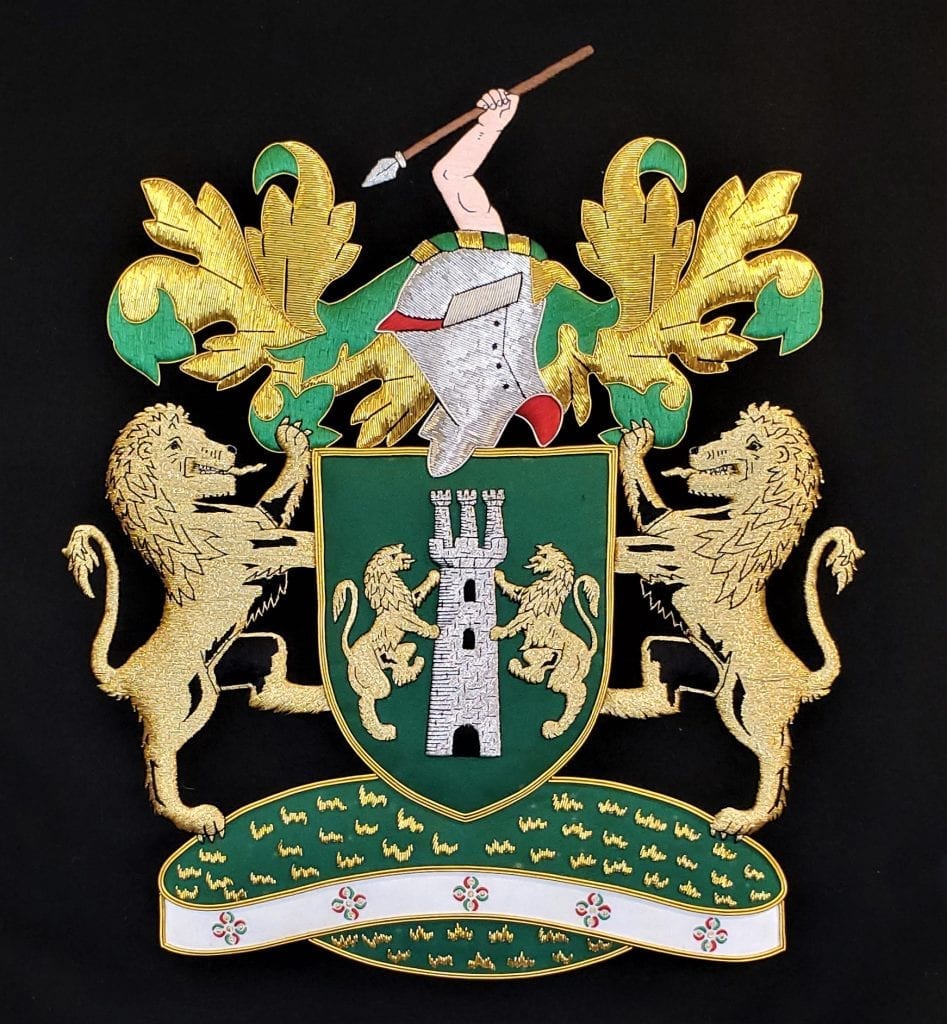

18C George II Miniature Campaign Bureau Chest on later Chest/Stand
Provenance: From a Private Dallas Collection/Originally British Colombia Canada.
Condition: Very good original condition. One or two very minor repairs to the molding trims. It looks like the locks were replaced at some time, but the current locks, are still mid 18C locks. Working key for bureau lock only. Repaired crack to bottom left of bureau door and repair above keyhole escutcheon.
Dimensions: George II Miniature Bureau is 23.5in Tall, 14.5in Deep and 24.25in Wide
Base Chest/Stand is 14.5in Tall, 16in Deep and 26.25in Wide
Total Combined: 38in Tall, 16in Deep and 26.25in Wide
SALE PRICE NOW: $6,800
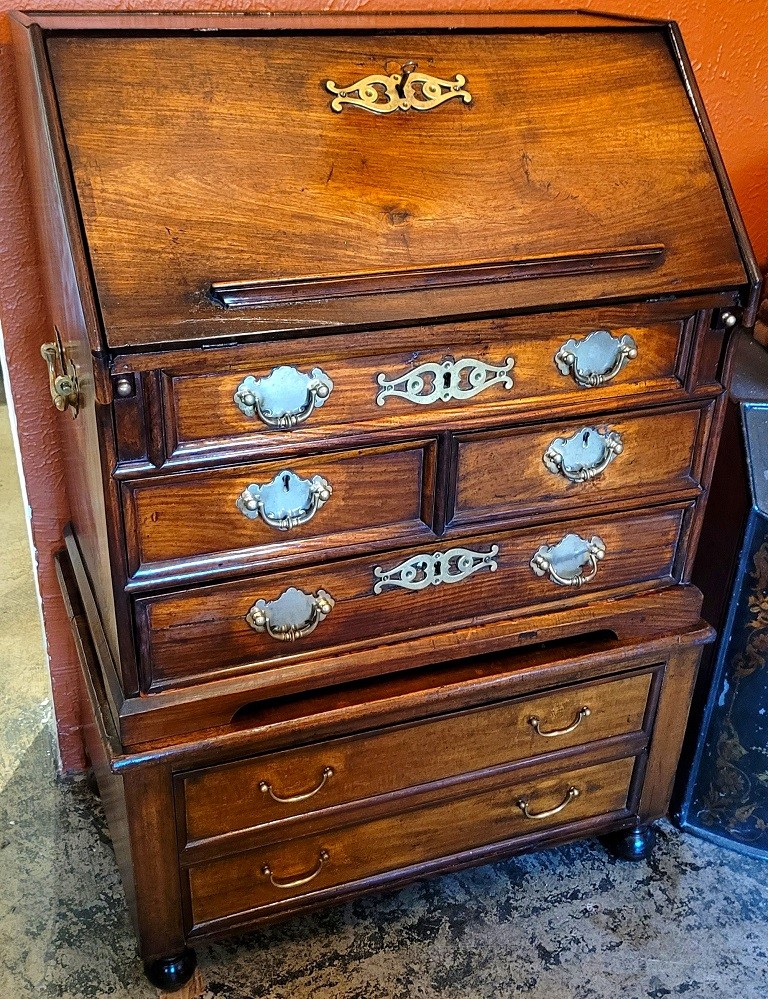

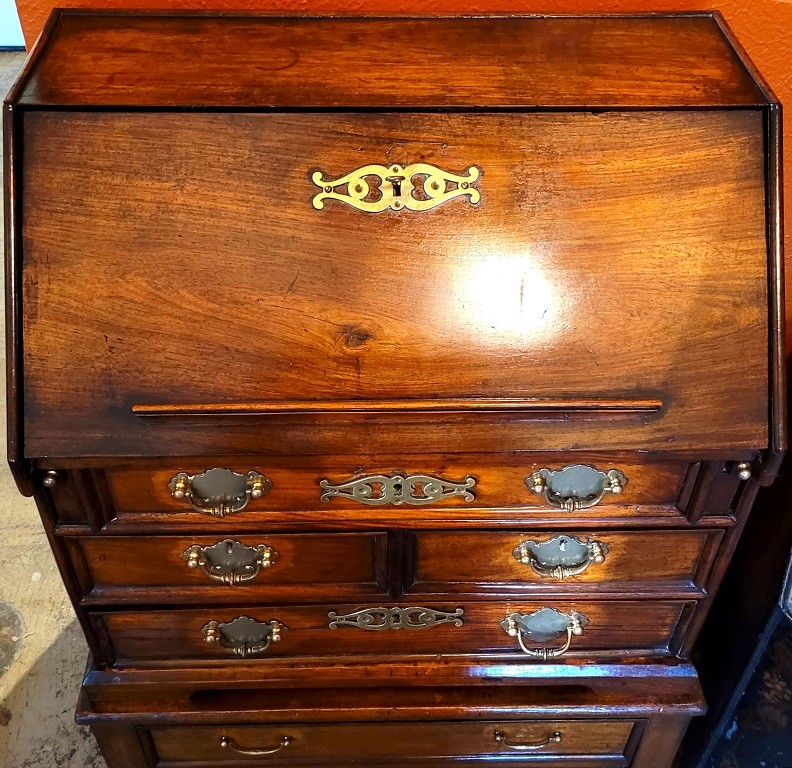

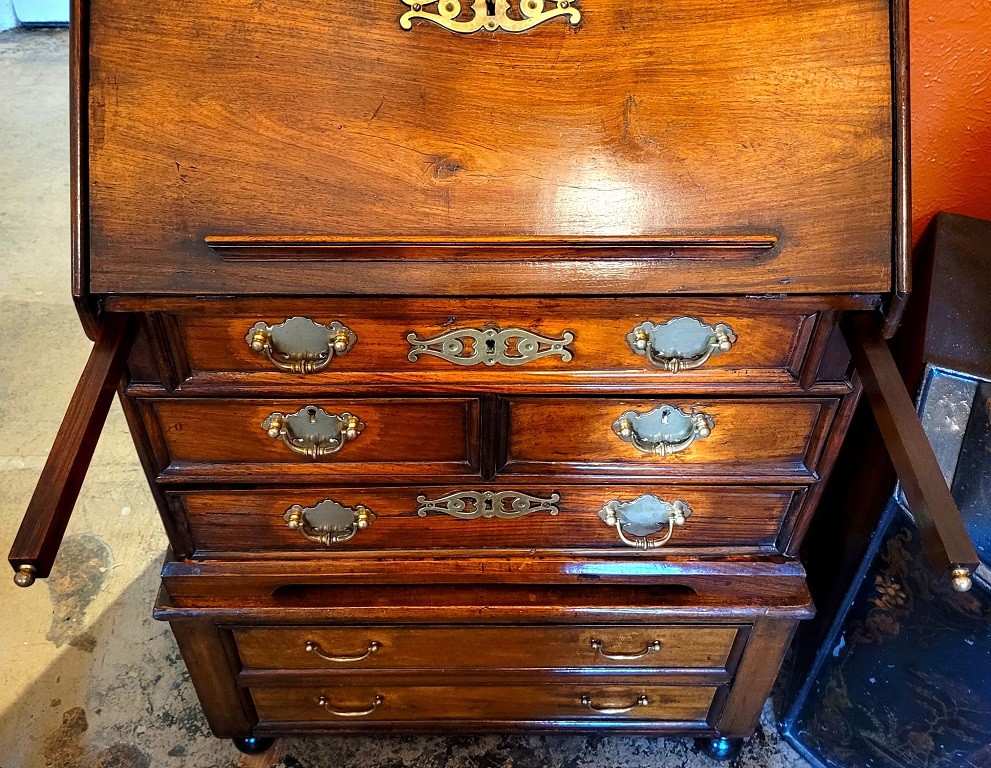

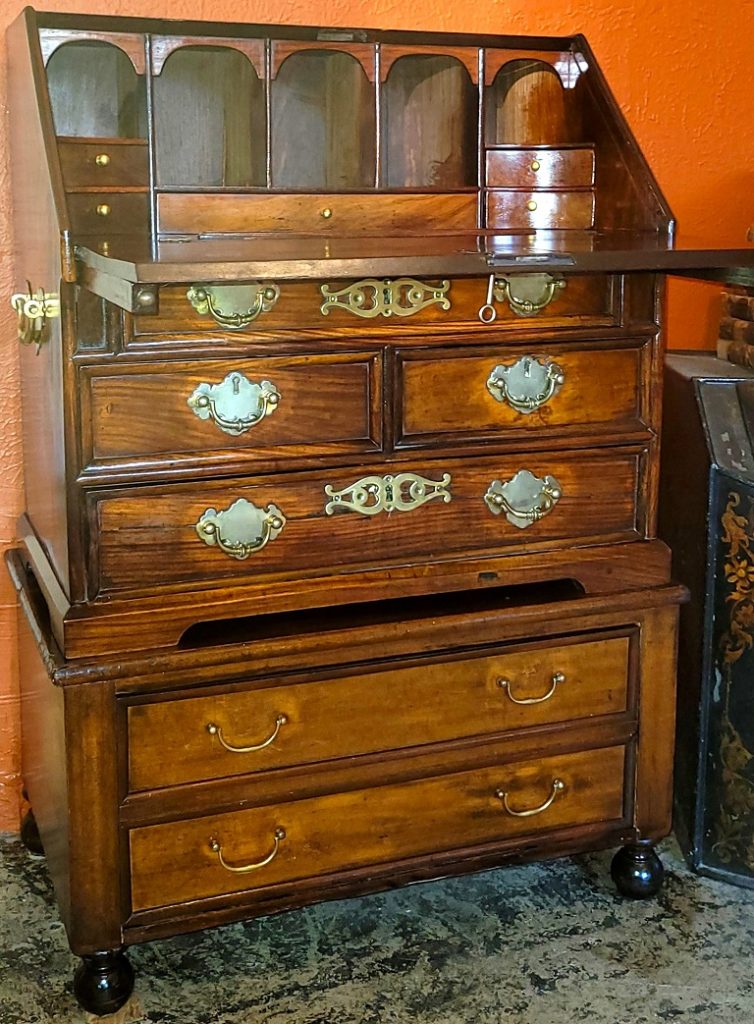

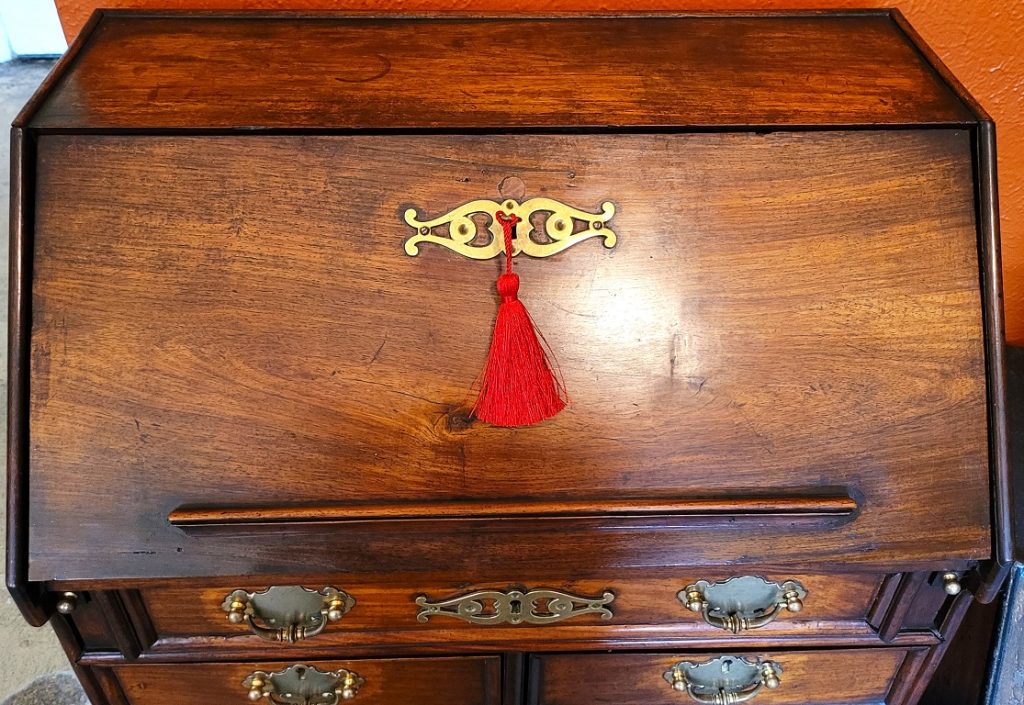

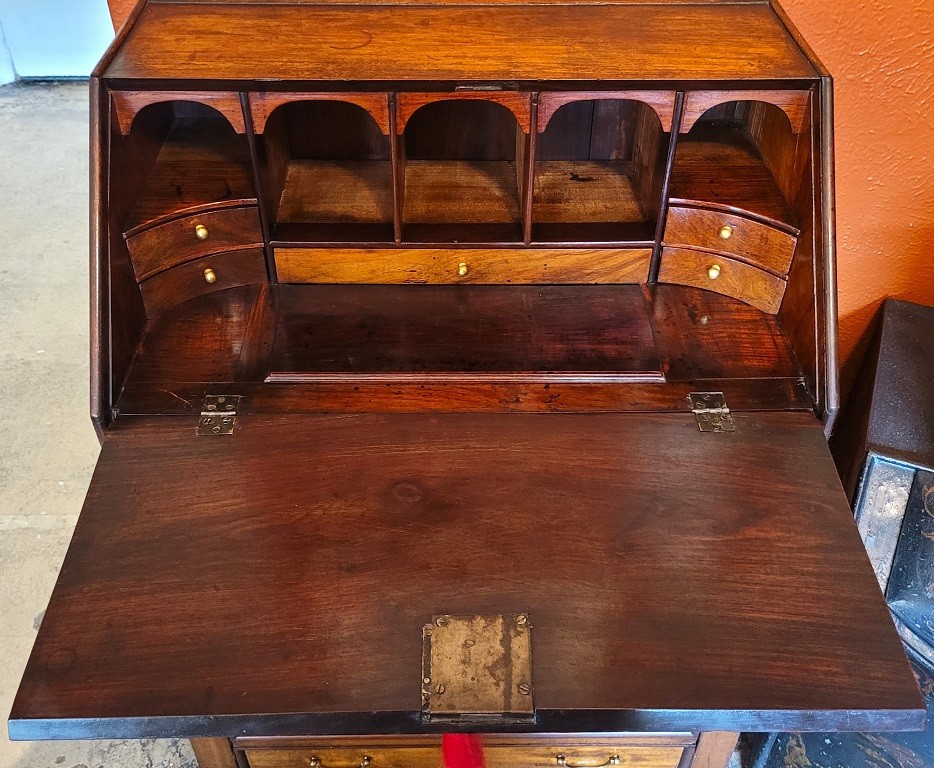

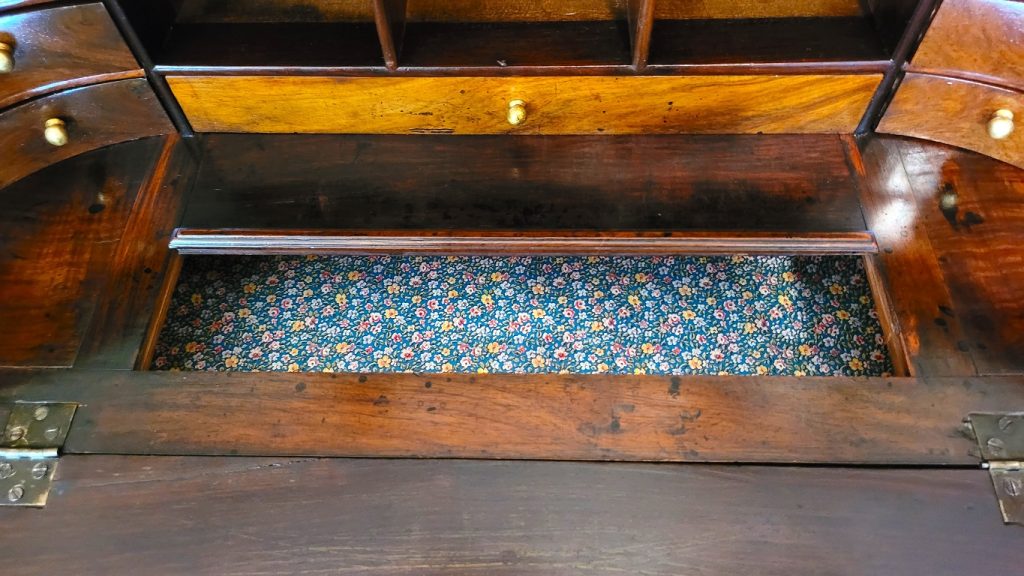

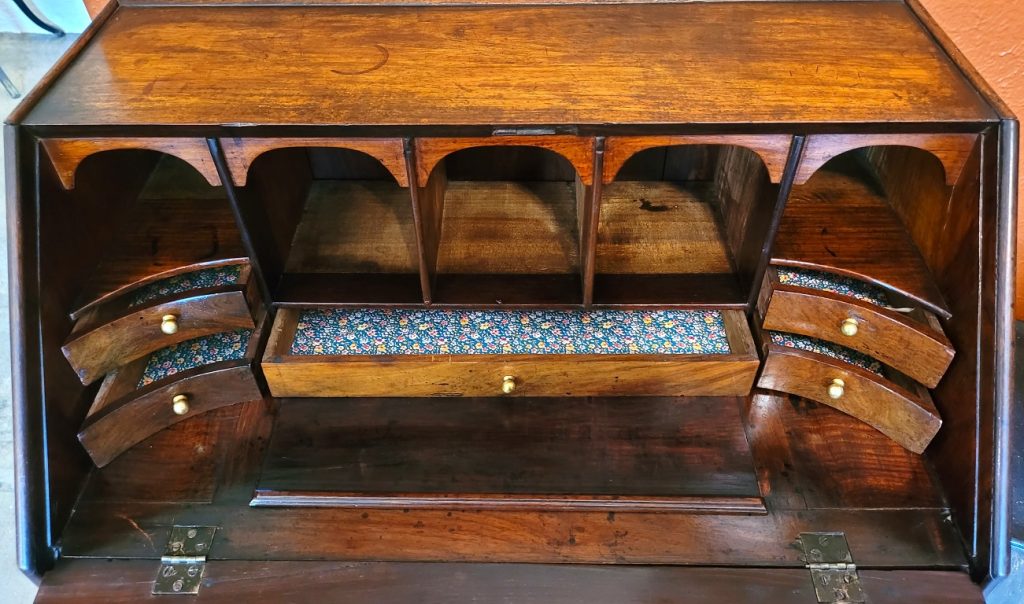

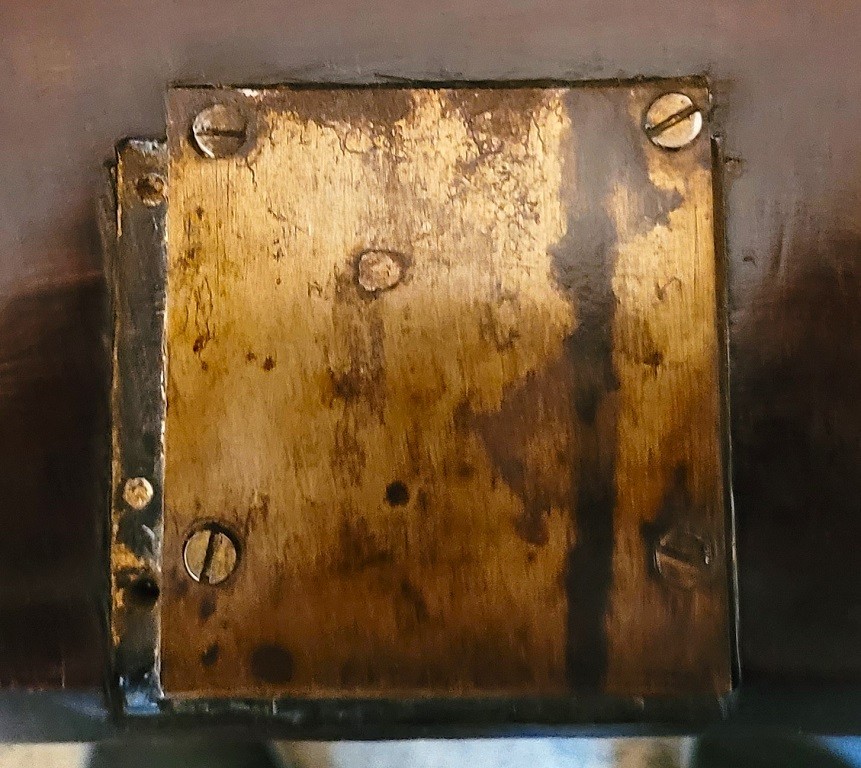

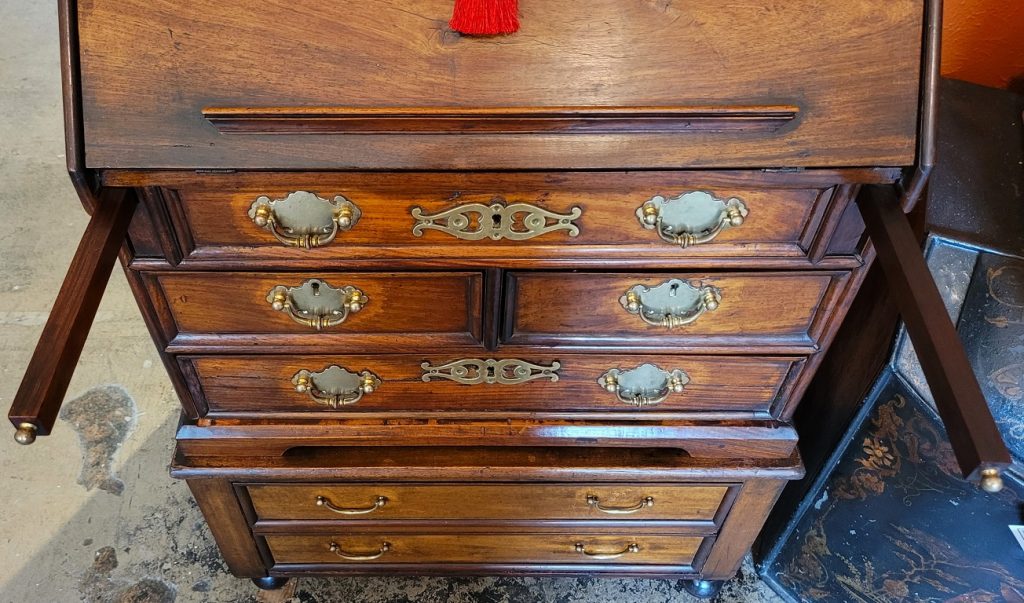

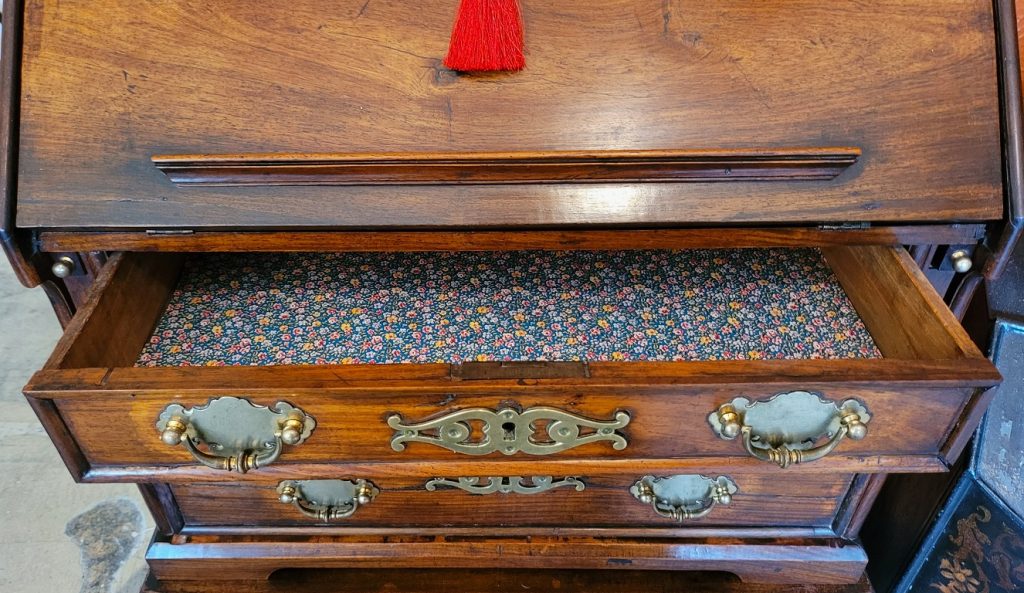

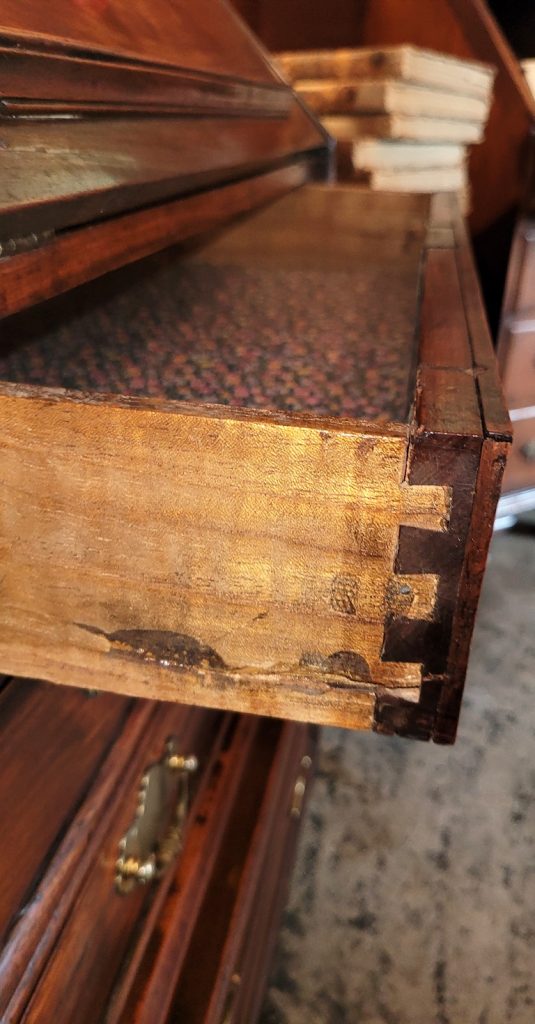

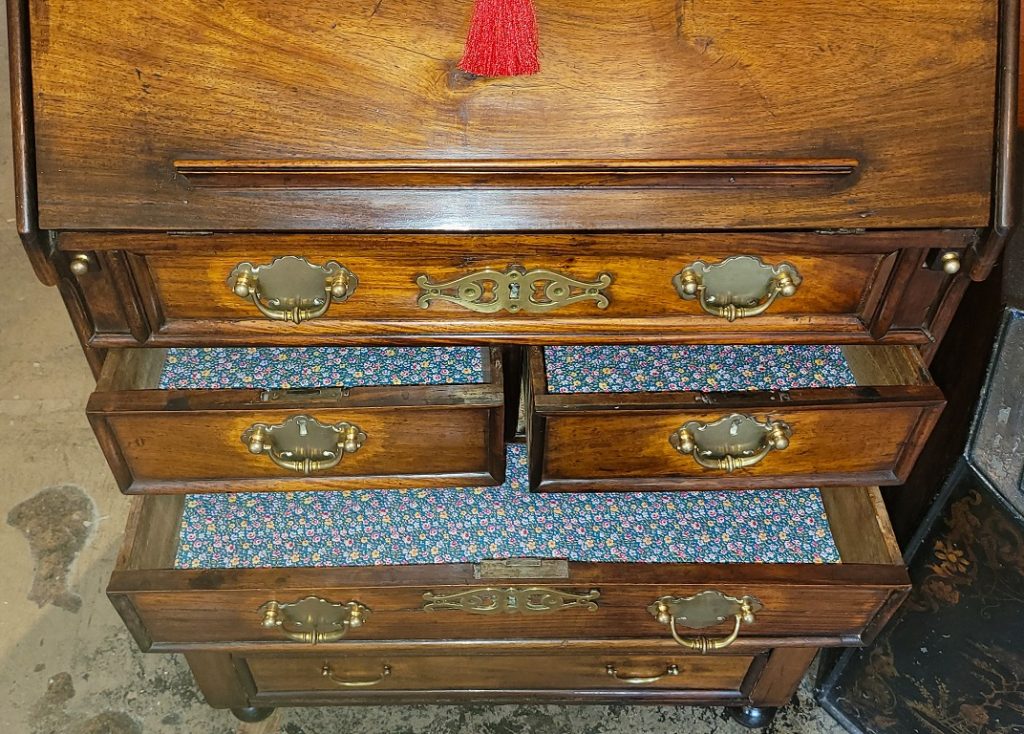

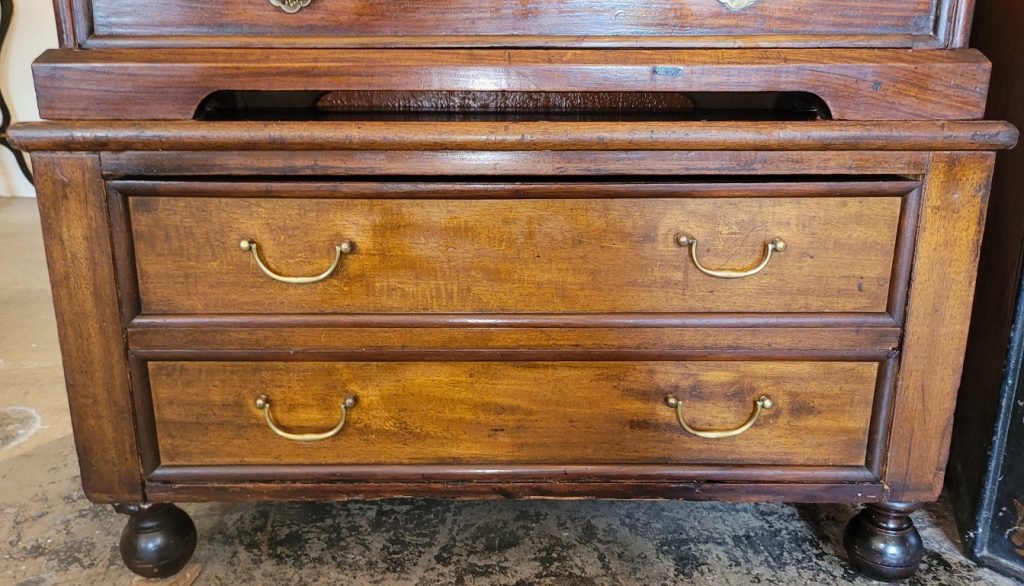

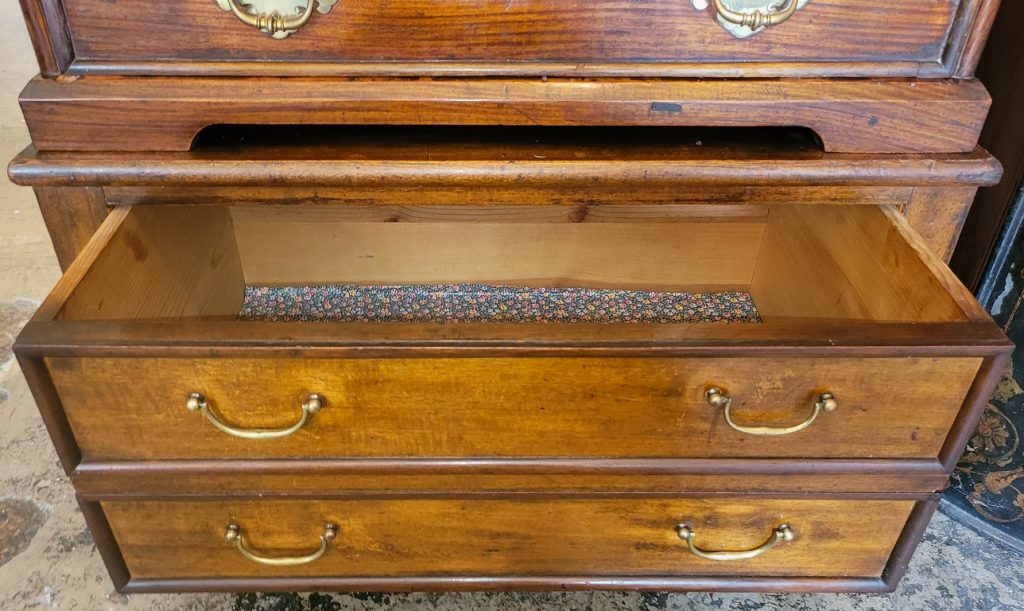

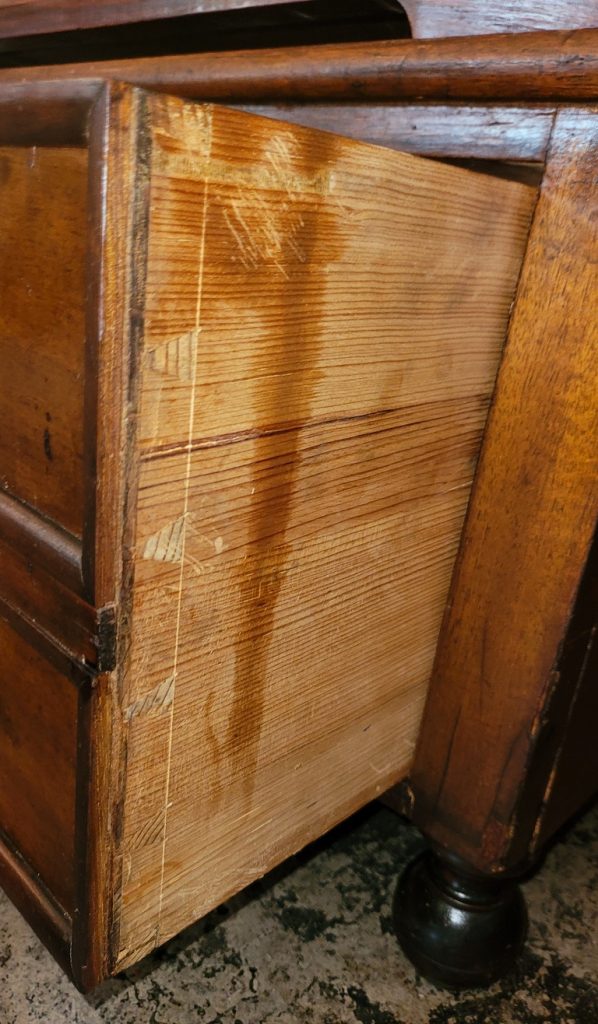

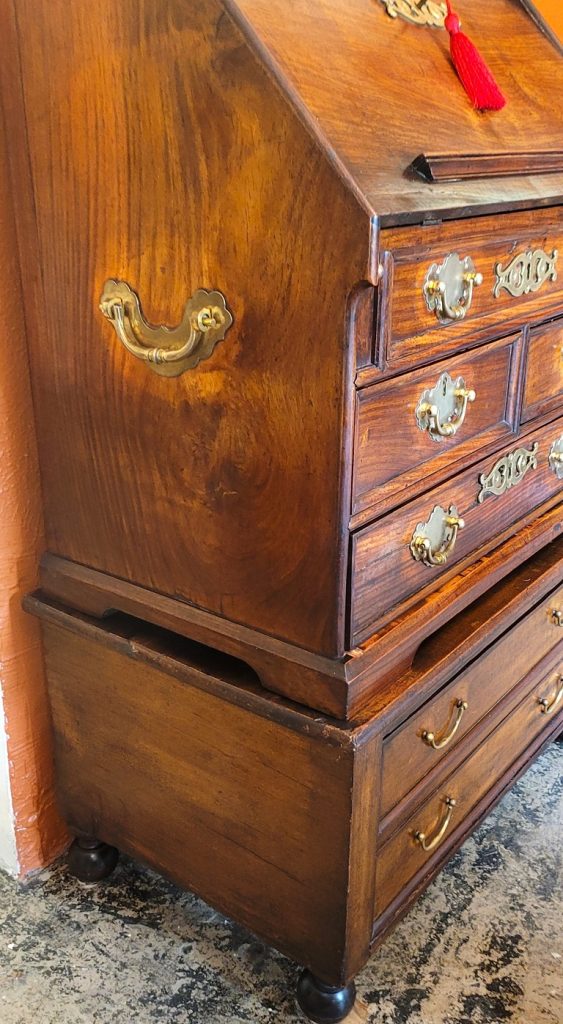

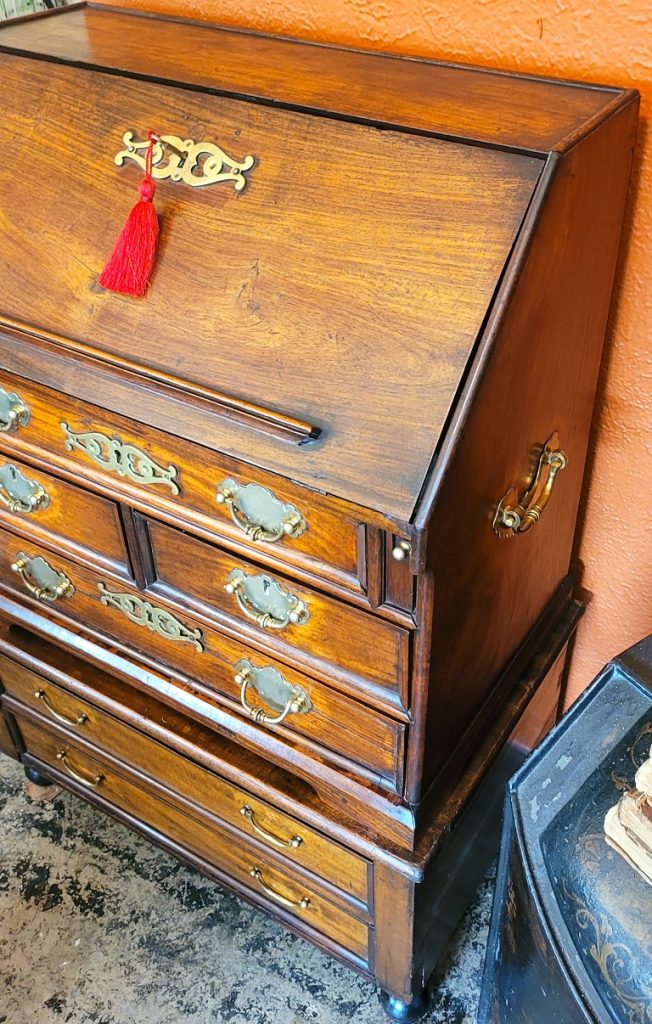

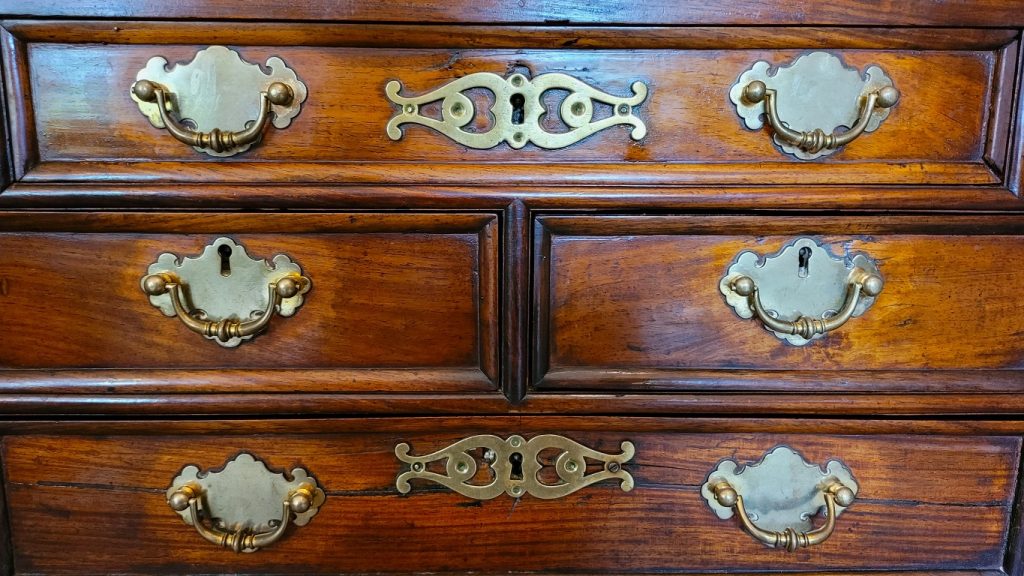

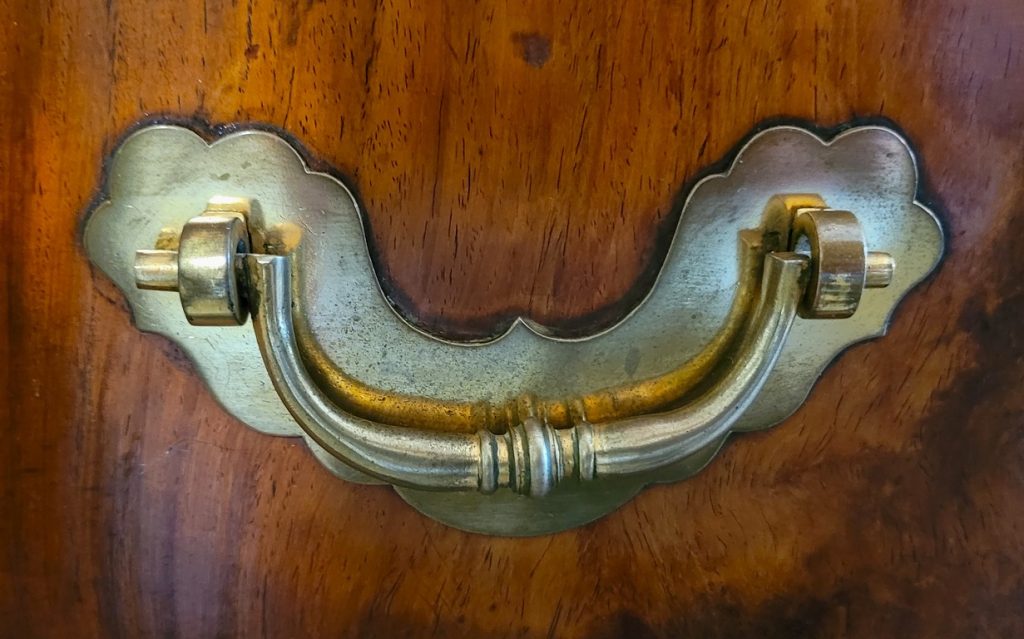

18C George II Miniature Campaign Bureau Chest on later Chest/Stand
